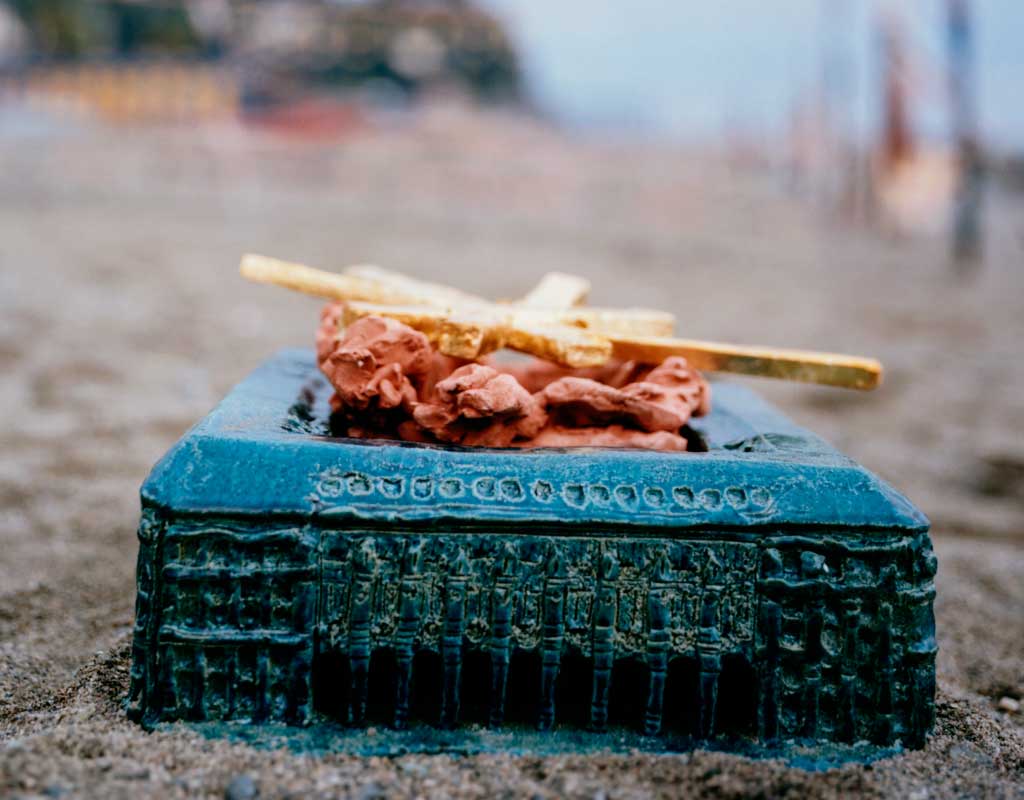
inside the whale
IMAGINARY REALISM“Everything began with the building, entrance to the Ice Palace. A building with no value and without a soul, anonymously and tightly held between other two buildings with greater character and identity. Some previous tests with the soul of ceramics, with its matter and, above all, with Danilo Trogu’s art, had been done for small objects, and not used as a tool to imagine architecture. For the Ice Palace building I wanted to resume the work on the façades of the nineteenth-century theaters, imagining the proposal of gilded frames and/or a ceramic-covered canopy. Thanks to that experience I understood, thanks to Danilo’s art, that for certain projects, in certain phases, this operating method, this additional gaze, this project within the project, made by hand, with heart and the culture of another figure, could be helpful in our research on the magical, or better, imaginary realism, that specific condition of exploration between dream and reality, between our imaginary that seeks to become reality and the reality that seeks to become part of our imaginary.
When the project overlaps with other gazes, hands, thoughts, it takes us somewhere else, but what is important is that it is a work of accumulation and it must be declared as one, without walking away from the truth. This other process is important and magical because it is done by Danilo on the basis of our work, but in the end, it is his work of art and, at the same time, the soul of our project.
It is not my work or the work of another, it would be specious and pretentious, and it would lose the magic, the energy, the possibility of taking us somewhere else. It would keep us where we are, only with one addition that does not make us “travel”. It is a form of mutual generosity, and generosity requires, or should at least consider, being an act of sincerity.
From that beginning, my personal journey, in the company of Danilo, stratifies along the path with the various actors that take part in the project, and aims to bring ceramics back into architecture, into the thought of the project, in our skies, and mostly in our next new journeys.” AF



